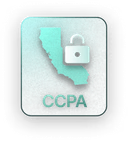Compliance and Security: Staying Audit-Ready with a Clinical Data Warehouse

Healthcare organizations are stewards of highly sensitive information. Every medication order, diagnostic code, discharge summary, or billing event carries not only clinical and operational weight—but also regulatory consequences.
And in today’s landscape, compliance isn’t a checkbox. It’s a risk surface. One breach, one failed audit, or one misconfigured integration can erode trust and trigger legal exposure overnight.
This is why the architecture and operations of a clinical data warehouse (CDW) matter so much. When designed with compliance and security at the core, a CDW doesn’t just store data—it protects it, governs it, and proves its lineage with confidence.
Here’s how leading health systems are staying audit-ready while still enabling innovation.
1. Foundation First: Secure by Design
It starts with architecture. A CDW must be built on secure cloud or on-prem infrastructure that meets baseline industry standards—HIPAA, GDPR, and HITRUST where applicable.

But security isn’t just about checkboxes. It’s about:
- End-to-end encryption at rest and in transit (PII, PHI, metadata)
- Zero-trust access models with role-based controls (RBAC)
- High availability configurations with built-in disaster recovery protocols
- Continuous vulnerability scanning and patching
Whether you're using PostgreSQL, Snowflake, or Redshift, your base must have automated policies baked in. One-time audits aren't enough—the system must defend itself daily.
2. Access That Reflects Roles, Not Just Titles
A clinical data warehouse touches dozens of teams—doctors, analysts, researchers, revenue cycle leaders. The principle of least privilege must govern who sees what.

Smart CDWs include:
- Tiered user groups with read/write/report separation
- Role-Based Access Control (RBAC) to match real clinical and operational roles
- Audit logs for every query, export, and schema change
- Conditional access—e.g., view-only access for external researchers
The system should answer: “Who accessed this data, when, and why?”—without slowing teams down.
3. Compliance Is a Daily Practice, Not a Quarterly Report
Traditional audits were retrospective: gather logs, fill forms, hope for the best.

Modern data platforms flip that around:
- Every transformation and join is version-controlled
- Data lineage is automatically tracked from source to dashboard
- Comprehensive audit trails built-in
- Alerts are generated for schema drift or permissions anomalies
The CDW becomes its own compliance engine. And when regulators come knocking? You’re ready in hours, not weeks.
4. Governed, Not Gated: Enabling Safe Innovation
Security shouldn’t kill agility. The best CDWs create safe zones where analysts and developers can build freely—while guardrails track and protect the environment.
How?
- Sandboxing with synthetic or de-identified data
- Data anonymization and masking for non-privileged users
- Dynamic views that adjust based on user group
This lets product teams run pilots, AI teams train models, and quality teams monitor outcomes—without breaching policy.
5. Documentation, Not Assumptions
Security and compliance teams shouldn't rely on tribal knowledge. Every data source, transformation, and output should be documented:
- Data dictionaries (with field-level sensitivity flags)
- Workflow diagrams mapping ingestion to output
- Policy annotations (e.g., retention rules, consent logic)
- Built-in compliance reports for auditors and internal reviews
When systems are well-documented, new team members ramp faster, reviews go smoother, and institutional knowledge becomes portable.
6. Consent and Compliance: Not Afterthoughts
No modern CDW can operate without supporting patient consent management and rigorous regulatory mapping.

- Consent forms—digital or scanned—should be captured and linked to data usage logs
- Rules should enforce access and retention based on regulatory compliance standards
- Logs should reflect not just who accessed what—but whether access was legally valid
This creates a transparent, defensible record for clinical data use that extends beyond compliance—it protects the patient relationship.
7. Why Compliance and Security Matter
Security and compliance aren’t operational burdens—they’re enablers of scale and credibility.
They allow healthcare systems to:
- Expand research partnerships without risk
- Certify to insurers and governments their fitness to handle sensitive data
- Enable AI, analytics, and interoperability without compromise
A CDW that’s secure and compliant by design gives organizations the confidence to move faster—because nothing important is being left unguarded.
Final Thought
Audit-readiness isn’t about fear—it’s about preparedness. The best clinical data warehouses don’t just make data accessible—they make its use defensible.
At Bioteknika, we work with hospitals and health systems to build secure, flexible CDW architectures that hold up under scrutiny—without holding teams back.
Whether you're preparing for accreditation, expanding into AI, or unifying disparate systems, it starts with trust. And trust starts with structure.
Related blog

Data Security in Patient Care Management Software: What You Need to Know

Top 10 Features to Look for in Patient Care Management Software

The Strategic ROI of Patient Registries in Value-Based Care

Patient Registries vs. EHR Modules: When Do You Need a Standalone System?

Scaling Patient Registries Across Multisite Health Systems: What to Plan For




